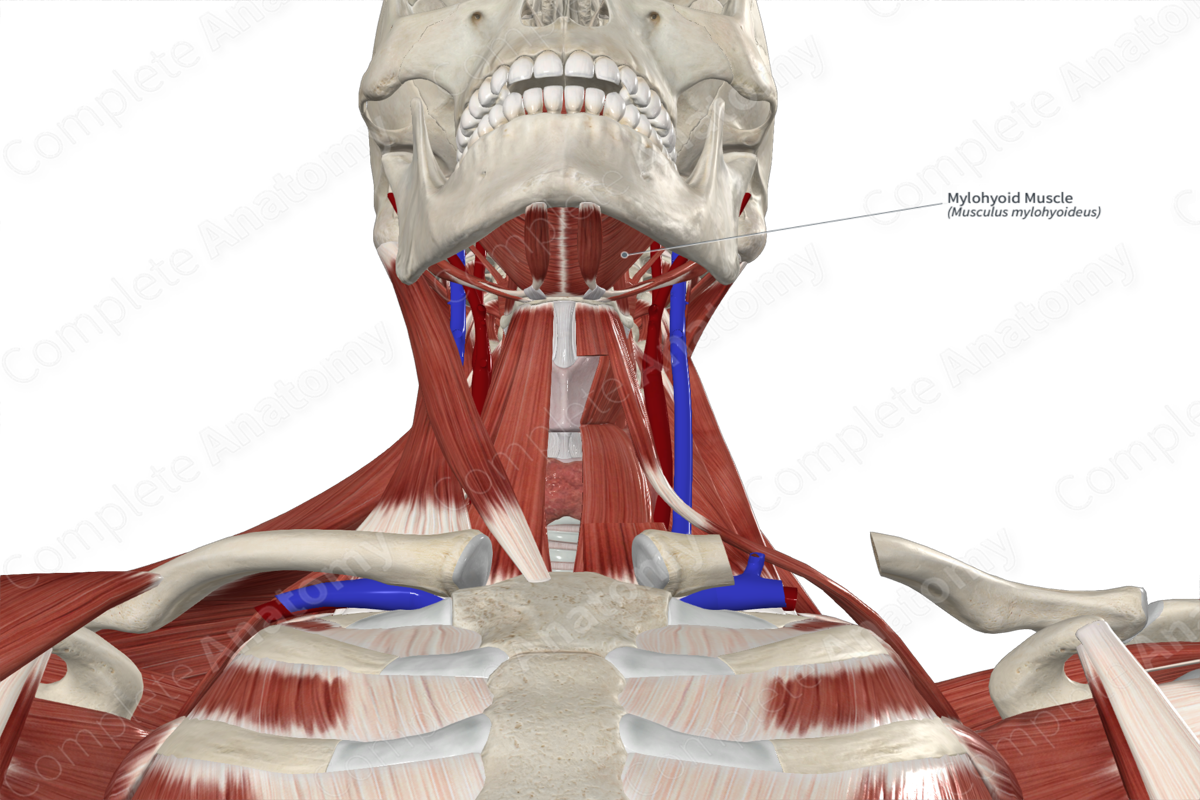
Quick Facts
Origin: Mylohyoid line of mandible.
Insertion: Mylohyoid raphe and body of hyoid bone.
Action: Elevates floor of mouth.
Innervation: Nerve to mylohyoid muscle (CN V3).
Arterial Supply: Sublingual and submental arteries, suprahyoid branch of lingual artery, mylohyoid and mental branches of inferior alveolar artery.
Related parts of the anatomy
Origin
Anteriorly, the mylohyoid muscle attaches to the mylohyoid line on the internal surface of the mandible. This line varies in length, where it may not extend as far as the third molar.
Insertion
Medially, the anterior two thirds of the mylohyoid muscle joins its contralateral fellow along a median fibrous raphe. Its posterior fibers extend inferiorly to attach to the anterior surface of the body portion of hyoid bone.
Key Features & Anatomical Relations
The mylohyoid muscles form the muscular floor of the oral cavity. Thus, it acts as a diaphragm between the oral cavity and the neck.
The inferior (external) aspect of the mylohyoid muscle is related to the anterior belly of digastric, as well as the facial artery and vein.
The superior (internal) aspect of the mylohyoid muscle is related to geniohyoid muscle in the midline, as well as hyoglossus and styloglossus muscle laterally. The internal surface is also related to the hypoglossal and lingual nerves and the sublingual gland. The submandibular gland sits on both the internal and external surface as it wraps around the free margin of the mylohyoid.
The innervation to the mylohyoid muscle arises from the mylohyoid branch of the inferior alveolar nerve, which itself arises from the mandibular branch of the trigeminal nerve (CN V3). This branch also supplies the anterior belly of digastric and occasionally it gives dual innervation to the posterior dentition of the mandible.
Actions
The mylohyoid muscle is involved in multiple actions:
- elevates the floor of the mouth, which is important for swallowing;
- elevates the hyoid bone;
- depresses the mandible at the temporomandibular joint (Standring, 2016).
References
Standring, S. (2016) Gray's Anatomy: The Anatomical Basis of Clinical Practice. Gray's Anatomy Series 41st edn.: Elsevier Limited.
Tubbs, R. S., Shoja, M. M. and Loukas, M. (2016) Bergman's Comprehensive Encyclopedia of Human Anatomic Variation. Wiley.
Learn more about this topic from other Elsevier products





